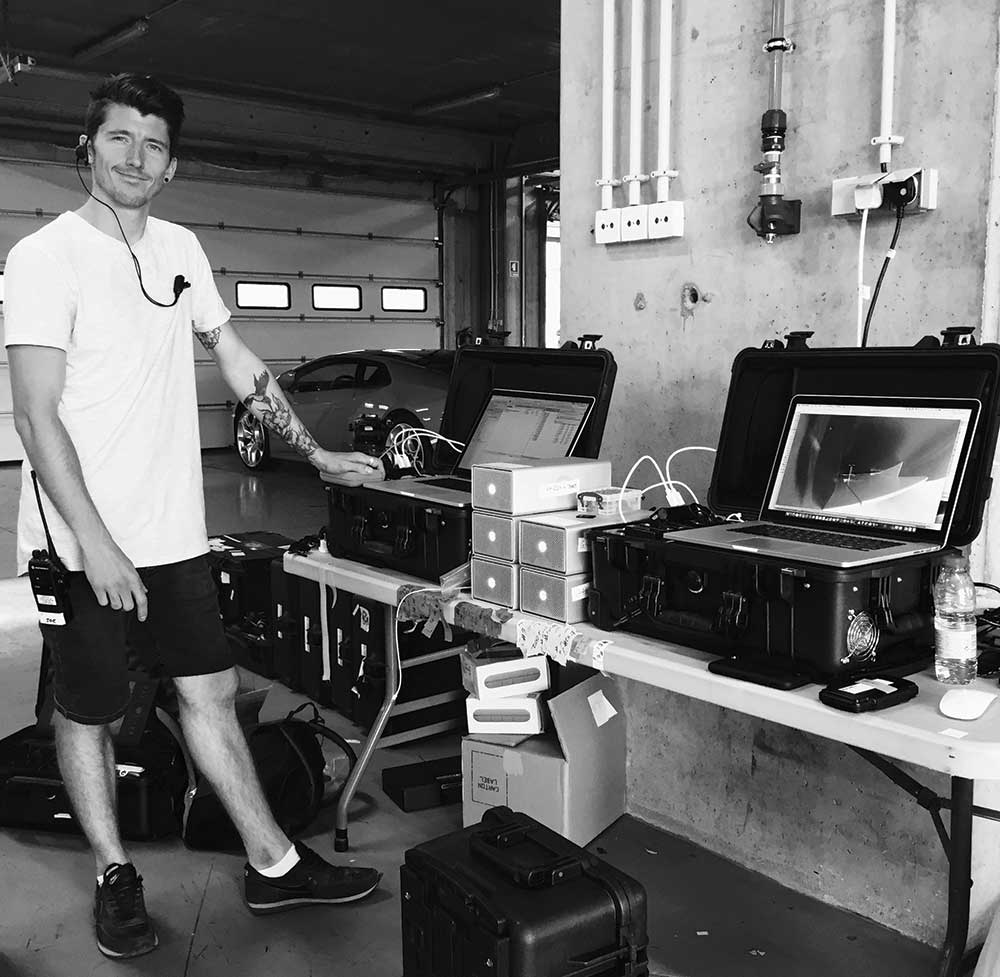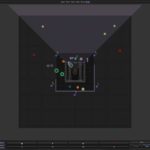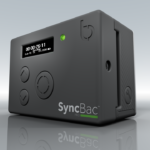
The Grand Tour – The Small Camera Story
Posted on Mar 7, 2017 by Julian Mitchell

While the ARRI AMIRAs give The Grand Tour the large vistas, the minicams shoot the in-car reviews and essential guy banter. On the outside of the cars there’s more of a balancing act
If you have seen the fantastic new The Grand Tour car show, you will realise that the in-car shots are as important as all the other types. You get the oohs and aahs of how good or bad the cars are as they’re driving them. Then there’s the banter, very important for this show.
Within the workings of the new programme these cameras need to follow well-defined parameters. They need to be 4K for a start, they need to have a locked exposure for the changing lighting, you need to know they are recording and they need to survive whatever is thrown at them throughout the series.
All this responsibility has been taken on by Jon Shepley of CreoKinetics. Jon is another ex-Top Gear operator where he worked for about five years with Extreme Facilities, who are currently still working for Top Gear. “The biggest challenge was the fact that it was being shot in 4K, in my field of minicams that really forces your hand as in what equipment is available. Although 4K wasn’t particularly new there’s still little in terms of small cameras that will actually shoot that. They also wanted to get a more cinematic look to it so cameras like the HD Toshibas that we used to use weren’t good enough. Because they’ve got tiny sensors they’ve got that infinite depth-of-field and they look quite video-y and nasty. So we ended up using the Panasonic GH4s which have been fantastic. They’ve never let me down and have done a tough year of filming.
“We bought 12 GH4s with three needed per car when the presenters are in there, plus some spares. With the GH4 you can dial in the frame rate we ended up using, but initially you couldn’t shoot for more than 30 minutes with this camera which wouldn’t have worked. This was because of the European tax banding for video cameras. So I had to buy all the cameras from the USA where they weren’t time limited. Panasonic has since brought out the R version which is a Pro version of the camera carrying the V-Log as standard as a colour profile and unlimited record time. The V-Log was another reason for going that way, I think we only shot the first couple of videos in Cine-D which was the colour space we started with. We got V-Log before it was generally available so thanks to Panasonic as it gives us lots of latitude.”
 Jon Shepley, as a test, quickly attached his very new Ronin-MX gimbal and GH4 camera to a safety car. The shots were the best of the day. For series two, they will be using the gimbal with a RED camera.
Jon Shepley, as a test, quickly attached his very new Ronin-MX gimbal and GH4 camera to a safety car. The shots were the best of the day. For series two, they will be using the gimbal with a RED camera.
Series Two plans
Although the GH4s record internally there are plans in place for series two that will give Jon some redundancy and less sleepless nights. “I’ve got these recorder boxes which we will be using in series two. We will be cabling the cameras down to Sound Devices recorders. The main reason for that is actually to save in post-production time because we can record in ProRes 422. So it will be the same as the main cameras, the ingest is then a far simpler process.
“The biggest challenge in using these cameras for the show is that you’ll start the cameras off for pieces to camera, and sometimes you won’t see the car again for two or three hours so it has to keep recording for as long as possible. The cards in them record up to five hours but have to be reliable and maintain exposure for all that time on the presenter’s face. That was the main reason to go for the GH4 because there’s a movable spot meter, so you can adjust the size of this overlay box and drag it around the screen. If you make the box roughly the same size as the presenter’s head, drag it over their face and it will automatically maintain exposure over that area.
“It’s a fantastic camera – we looked at all the options – Sony was very keen for us to use the A7S II which wasn’t even out at the time but it had the same problem as the other cameras. It didn’t have this feature where you could guarantee reasonable exposure over the presenter’s face.”
 In The Grand Tour , the car grip equipment is non-standard mainly because cars need to be rigged in minutes rather than hours.
In The Grand Tour , the car grip equipment is non-standard mainly because cars need to be rigged in minutes rather than hours.
Small lens choice
With usually such small spaces to shoot in inside these hyper cars, lens choice becomes a major factor. Long gone are the days when a GoPro extreme wide-angle shot will do.
“Lens wise we go for the shallowest depth-of-field within reason. We use variable NDs on the lenses so we can keep them fairly wide open. The lenses which we are using for the main piece to camera shot are Micro Four Thirds so when you shoot 4K it does crop in slightly tighter, a 2.3 crop, which means that you have to have a very wide lens to actually get the standard ‘Top Gear look’, the 35mm equivalent is around 24mm.
“So we’ve ended up using the 10.5mm Voigtländer f/0.9 lenses on the GH4s for the piece to camera shots. They’re great lenses but quite heavy, which is their major drawback for us. It can be a problem in cars that vibrate a bit, like drift cars or similar vehicles.
“We try and keep the interior piece to camera lenses separate to the effects lenses on the cars mainly because they are open to a lot more abuse. We tend to use the Samyang 12mm T2.2 lenses for effect because they’re very cost-effective and incredibly good quality. These lenses easily stand up to the Voigtländers and the Kowas that we also use. We use the Kowa 8.5mm for a two shot in the car or out. The 17.5mm Voigtländer is used for a style shot or over the shoulder shots.”
 Main DIT on The Grand Tour, Joe Jamieson.
Main DIT on The Grand Tour, Joe Jamieson.
Are we recording?
What keeps Jon and his team up at night is when they have pressed record on their cameras and the cars leave for what may be hours of shooting: is the camera still recording? “To trigger the GH4s we used to use Wi-Fi and extenders, but when the cars go off there is a fear, a constant fear, whether the camera is still recording and when you get it back will the footage be there. So we keep everything as simple as it can be. You could have the presenters triggering the cameras themselves but there is no feedback from cameras so although they could trigger as we had in the old systems, there’s no way of telling whether it’s recording or not. That’s one of the reasons we’ll have the recording boxes for the next series which will be such an improvement. They’ll have their own buttons once more for recording and they’ll have a light on the buttons that will tell them yes, you are recording or no, you’re not.
“Planning for the next series is a movable feast, new cameras come out like the Blackmagic Micro Studio 4K, which you get very excited about and then you find that it doesn’t do anywhere as good a job as the GH4. It’s frustrating for everyone as directors want to carry on driving things forward, but you can’t compromise reliability with anything really, that’s the key aspect. At the moment there is nothing that comes anywhere close to the GH4.
“The new GH5 will actually do 10-bit on-board so that’s very exciting. However, we’re planning to do off-board recording anyway. If it does internal and external recording that would be very interesting because then if something did go wrong with the off-board recording, we’d be safe with an on-board recording.
“The biggest problem with that is if you pull the HDMI out of the side of the camera it stops the camera from recording anything. This might happen when you’re shaking in a car. So we have to use clamps on the side of the camera to stop the cable from doing that.”
Car gripping
Apart from making sure his minicams work and match the main footage of The Grand Tour, Jon’s team also have to make sure that cameras used for effect shots grip onto the cars and then stay there.
“The whole grip thing is tricky as we’re definitely not grips! What we do is something quite different, we know rigging small cameras to cars better than anybody. Speed of rigging is the big problem – a grip rigging a camera to a car is a matter of scaffolding, which is incredible and very solid. However, we quite often have ten minutes to rig three cameras. Sometimes we would have 18 shots to do per car and we would have three cars and two hours to do it in. There is no way that you’d get a normal grip to do that kind of work.
“One of the tricky things with modern cars – and it’s becoming more of a problem – is that they’re made from more and more flimsy material. Jaguars particularly don’t really have the rigidity to the bumpers and the wings. So we end up with a rat’s nest of suction mounts and arms to spread the load across a curved surface. This is a feat of engineering in itself.”
Part of the plan for series two involves a new way of shooting from tracking cars. The DJI Ronin-MX gimbal had been released for sale only two days before it was attached to one of the safety cars for a test. What they got was a phenomenal result. “They wanted to get some forward and rear-facing tracking shots, I persuaded the director to let me put the gimbal on so we could do some tests on it. They were the best shots of the day.
“It’s designed to go onto vehicles and it has the GPS chip on it so it knows you’re going around corners. Gimbals like the MōVI and the original Ronin basically collapsed when you went around corners or tried to compensate and would give up as they just couldn’t cope with the G-forces.
“Since doing the tests I’ve been making proper mounts for it to go onto tracking cars front and back. I’ve also got a RED camera which we’ll be using on it for the next series. We’ve been using HD upscaled to 4K front tracking up until now so that will change for the next series. Speed is still the key, you have to be able to rig and de-rig it in a matter of minutes.
“Lighting wise, we used to have a light panel over by the ‘piece to camera’ camera which gave a harsh shadow effect behind the presenter’s head, which I always hated. We’ve ended up putting very thin panels in the roof lining almost in line with the interior light in a strip up the middle. It’s a much softer downlight almost like the light you’d get from a sunroof. Its look is much more diffused and natural. Remember on the GH4s you can dial in a Kelvin colour balance and with the bicolour light you can dial in the colour balance as well. The trickiest time for us is that dawn/dusk time when the light is changing and you have to use your experience to find where best guess is. You need your best compromise setting.”
The DIT Story
Joe Jamieson talks about the importance of team spirit and workflow
Before we started filming we tested a range of cameras, codecs and frame rates to identify what would look best for the upcoming show. Which cameras we shot on was a factor as the Sony F55 and ARRI AMIRAs shoot 4K at different compressions and qualities (20mins at 37GB for the Sony versus 20mins at 120GB for the AMIRA) which directly impacts the amount of data I’m dealing with. Once I knew what I was working with I could begin devising a workflow for our shoots and the series.
AMIRA
Overall the latitude and dynamic range of the AMIRA sensor offers up a capability that can pretty much deal with any situation it’s put in. That coupled with the versatility and ruggedness of its design is why Ben Joiner wanted to use it and I think the results have been quite exceptional. Even in the harshest of environments the AMIRAs just kept going. I don’t think there are many cameras out there that would have consistently dealt with what we’ve thrown at them.
Team spirit
On this show the reliance of working together as a cohesive team is more paramount than on anything I’ve worked on previously. Between my team we always work to keep each other rolling, both with fresh cards and rushes. This way we avoid data bottlenecks regardless of how fast we’re shooting.
This hopefully helps us stay on top of any end-of-day influxes (though that’s not always possible!) and, as I said before, we can also stay up to date with feeding back to our operators.
Technically a thorough workflow is as important as your previous work and experience. With the amount of cameras, cards and data we work with daily it could so easily be a nightmare for everyone. The fact that it hasn’t been is largely down to a solid amount of research, planning and a good system but also the importance of how well this team works together. We are aware of where each of our roles interact, we shoot at such a pace and are in and out of locations and destinations so quickly that it all has to work and stay on the rails. I think for me that’s the most impressive thing about being part of it.








